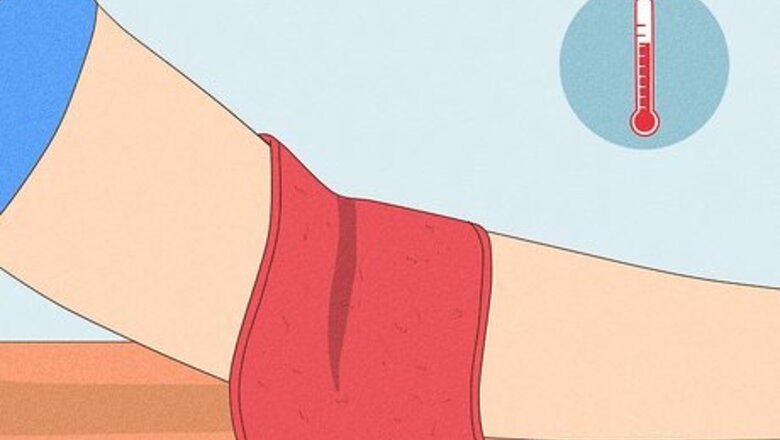
views
X
Research source
- Apply a warm compress over the draw site for 2-3 minutes to dilate the veins and make them more visible.
- Massage the draw site gently to help elevate the veins, then feel for one by running your index finger along the area.
- Ask the patient to swing their arm lightly to increase blood flow and make the veins more prominent.
Tricks to Make the Vein More Visible
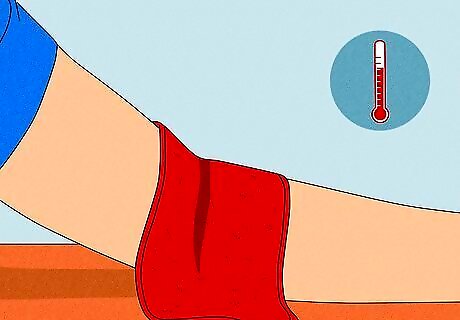
Place a warm pad or washcloth over the draw site. Warmth causes the veins to dilate, making them easier to spot and stick. To heat up the veins, apply a warm compress over the draw site for 2-3 minutes, and be sure to disinfect the area with 70% alcohol afterwards (before you draw blood). Alternatively, soak the arm in warm water or place it under a running faucet.
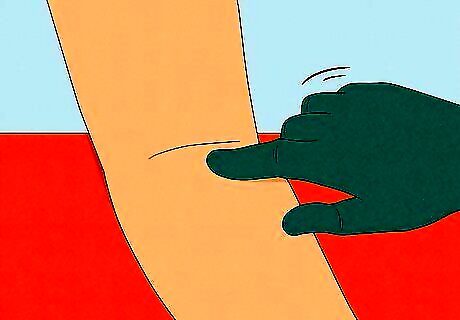
Palpate the patient’s arm to help raise the vein. Difficult veins aren’t visible to the naked eye, but you can locate them by touch. Gently massage the draw site to make the vein more visible, then use your index finger to find one that feels spongy yet firm. Nurses in movies and TV shows often slap the arm to find difficult veins, but this is actually a poor technique that can result in a hematoma.
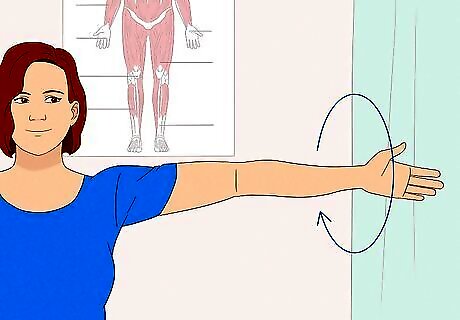
Ask the patient to swing their arm clockwise to expand the vein. When you increase blood flow to the arm, it can increase the veins and make them more visible. Tell the patient to gently swing their arm in a clockwise direction, or have them perform a light exercise like jumping jacks or bicep curls. If you’re drawing blood from a regular patient, tell them to avoid strenuous exercise the day before the blood test to ensure their results are accurate.

Tell the patient to take deep breaths to relax the vein. If the patient is nervous or has a needle phobia (trypanophobia), it becomes more difficult to draw their blood. Stress can compress their veins and negatively affect the results of their test, especially for biochemistry panels. Reassure the patient that the pain is very brief and minor, and have them breathe deeply to calm down. You could also help them feel at ease by chatting about their day or turning on some relaxing music (if possible). If you think the patient might faint, have them lie down on their back to improve blood flow to their head. This also reduces their chances of falling and injuring themselves if they do pass out.

Advise the patient to drink water before their appointment, if possible. Most blood tests don’t require fasting, so the patient can eat or drink before coming in. If that’s the case, ask the patient to drink lots of water to hydrate their veins and make them more accessible. You may want to advise the patient to avoid caffeinated drinks 24 hours before their test to prevent dehydration.
Taking Blood from the Forearm
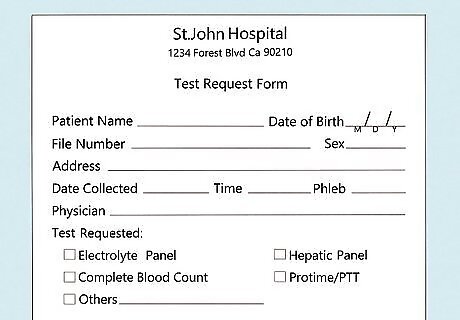
Verify the patient’s information and prepare for the test. To set up for the blood draw, confirm the ordered blood tests, and ensure that the forms and labels are accurate. Check the patient’s first and last name, file number, date of birth, and the reason for the blood draw. Then, ask if the patient has any allergies, phobias, or if they have ever fainted during previous injections. After confirming this information, assemble your supplies, wash your hands, and wear appropriate personal protective equipment (PPE).
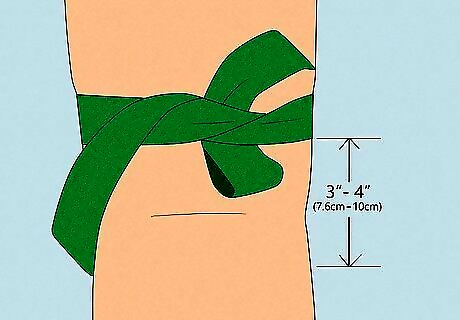
Apply a tourniquet to help you find the vein. A tourniquet increases the amount of blood in the vein to make it stand out more. To apply a tourniquet, place it approximately 3 inches (7.6 cm) to 4 inches (10 cm) above the draw site, and make sure that you do not tie it too tight or for more than 2 minutes. If the tourniquet is tied properly, the vein will feel resilient or slightly bouncy when you palpate it. A tourniquet also helps anchor the vein so it doesn’t roll around as much, making blood draw less painful for the patient and injection easier for the phlebotomist. Alternatively, you can use a blood pressure cuff that is inflated to 40–60 mm Hg.

Locate the median cubital vein. In general, the inside of the elbow is the preferred draw site because the median cubital vein is usually visible. This vein runs between the muscles and often looks like a blue bulge in the inside of your elbow. It’s also relatively easy to access because the tissue around the vein prevents it from rolling away from the needle. If you can’t see the median cubital vein, gently massage the area to feel for it. Do not draw blood from a place where the veins divide or join together—doing so increases the risk of a hematoma.
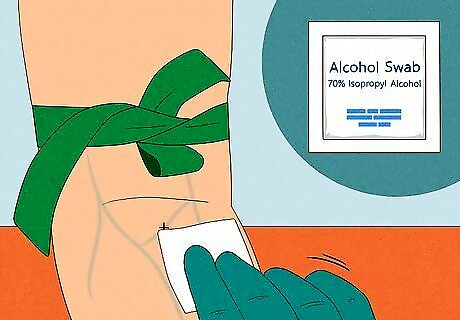
Disinfect the entry site with alcohol. Before drawing blood, clean the area with a 70% alcohol swab for at least 30 seconds, and make sure to cover at least 2 centimetres (20 mm) downward and outward from the center of the site. Let the skin dry completely for another 30 seconds before inserting the needle. Alcohol is a better disinfectant than iodine because if iodine gets into the blood, it can alter the test results. If you decide to use iodine, follow it with a 70% alcohol swab. Do not blow on or fan the entry site with your hand as it will contaminate the area, and repeat the disinfection process if you accidentally touch the site.

Anchor the vein, then insert the needle quickly to draw blood. To prevent the vein from rolling, hold the patient’s lower arm and pull the skin below the vein taut. Ask the patient to form a fist so the vein becomes more visible, then swiftly insert the needle at a 15 to 30 degree angle. Hold still while collecting blood, and attach the necessary tubes or syringes to remove the proper volume (as specified by your laboratory). Release the tourniquet after 1 minute before removing the needle. Leaving the tourniquet on for longer than a minute will affect the concentration of red blood cells, possibly altering the test. Withdrawing the needle while the tourniquet is still on will result in pain.
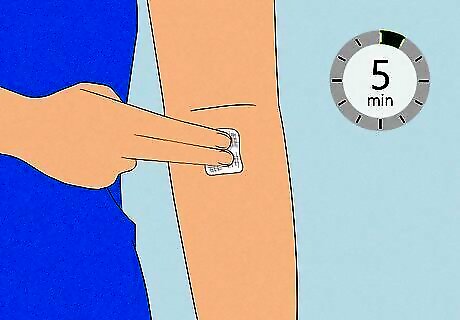
Apply gentle pressure to the site for 5 minutes to stop the bleeding. After removing the needle, take clean gauze and place it over the draw site. Ask the patient to hold the material in place with their arm straight and extended, and make sure they do not bend their arm during this time to avoid a hematoma.
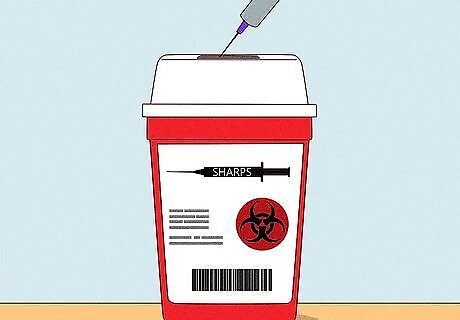
Discard the needle and contaminated materials in a biohazard container. Activate the needle’s safety feature before throwing it away, and dispose of the needle, syringe, and blood sampling device in a puncture-resistant sharps container. You can discard any items that do not release blood if squeezed (such as gloves) in the general waste, unless your local regulations or hospital states otherwise.

Double check the label on the tube to ensure it is correct. Mislabeling could lead to delays in processing the sample or more serious issues like misdiagnosis, so be sure to recheck the labels on the tubes and forms before dispatching the blood samples.
Troubleshooting Strategies===
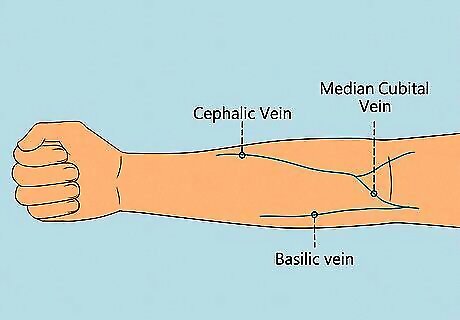
Look for another vein if the median cubital vein is not visible. If you cannot find the vein in the inside of the elbow in either arm, move down the forearm to search for the basilic or cephalic vein. These veins are usually visible through the skin, and you can ask the patient to lower their arm and make a fist to make them more prominent: The cephalic vein runs along the radial side of the forearm, and it is the second most common draw site after the median cubital vein. The basilic vein runs along the ulnar side. The basilic vein is less frequently used than the cephalic, and it is more likely to roll away from the needle than the cephalic vein because it is not held as tightly in place by the tissues around it. If you can’t access those veins, find the metacarpal veins on the back of the hands. They are usually visible and can be palpated. However, do not use them for elderly patients because the skin is not as supple and does not support the veins as well.
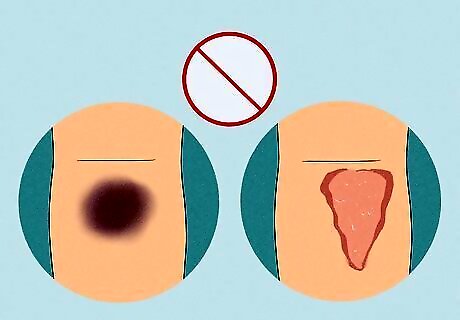
Avoid certain entry sites. Some entry sites are more difficult to access and have a higher probability of complications. When choosing a site, avoid drawing blood from the following areas: Sites that are near an infection Have extensive scarring Have a healed burn Are on an arm that is on the same side as where the patient had a mastectomy or fistula placed Are bruised Are above an IV line Are on an arm where the patient has a cannula, fistula, or vascular graft
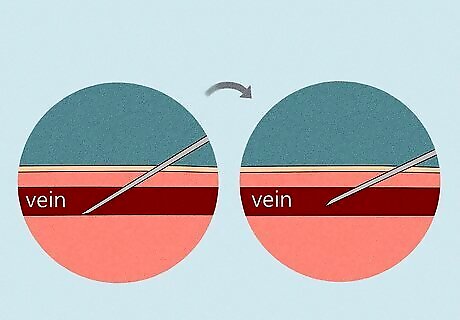
Correct improper needle placement. Occasionally, you may encounter problems with the needle, such as going too far into the tissues or inserting it at too low of an angle (so the bevel is against the wall of the vein and impedes blood flow). To fix this, pull the needle back a little bit without removing it from the skin, and change the angle of the needle while it is still under the skin so that it can be inserted into the vein.

Ask a colleague for help if you cannot find a vein in 2 attempts. Protocol in many laboratories and hospitals dictates that phlebotomists may attempt a venipuncture 2 times before having someone else try. If both of your attempts are unsuccessful, ask a colleague to locate the patient’s vein.


















Comments
0 comment